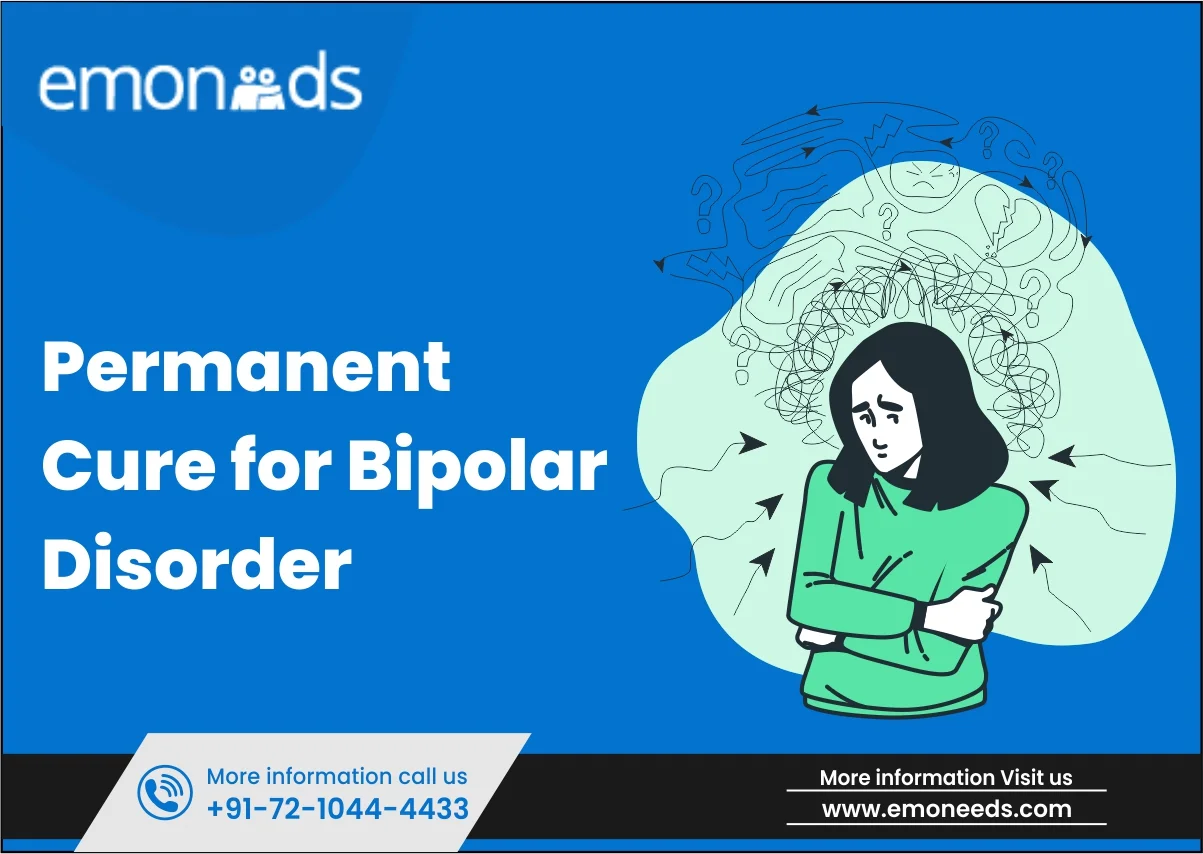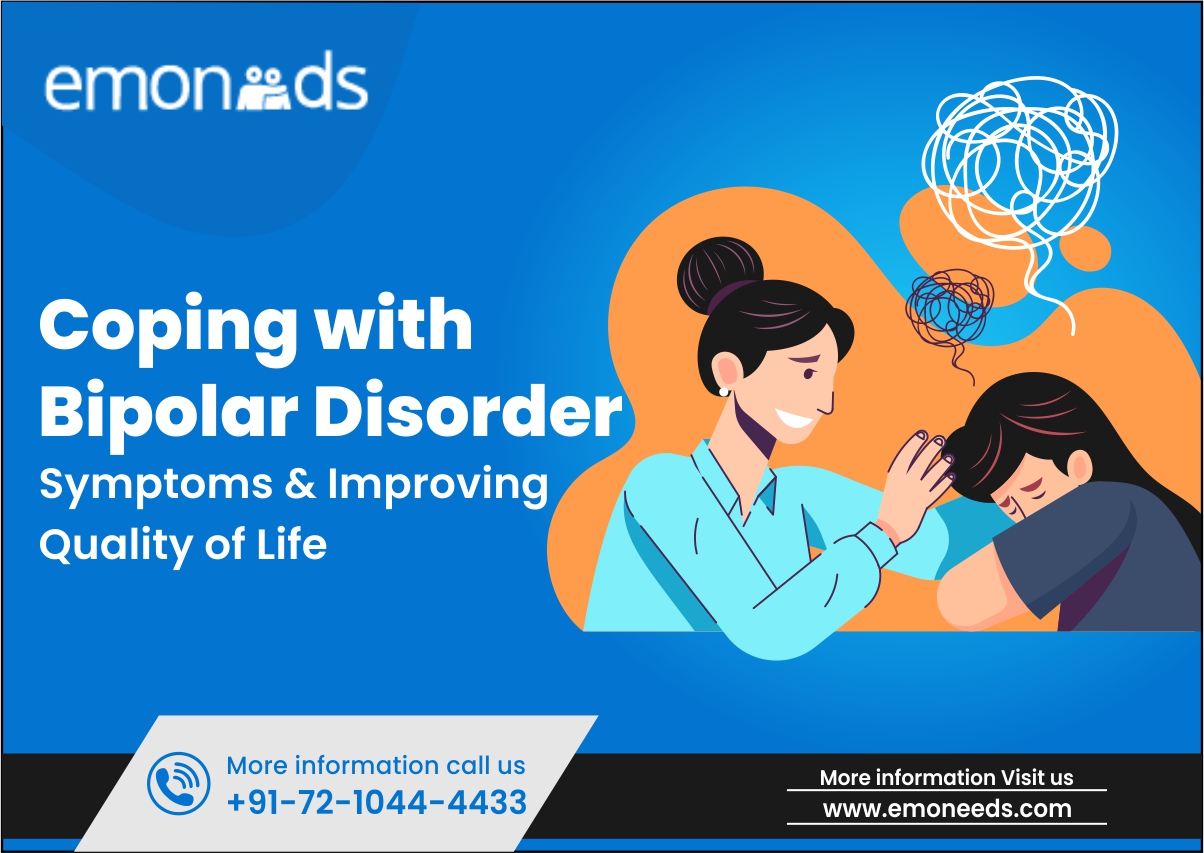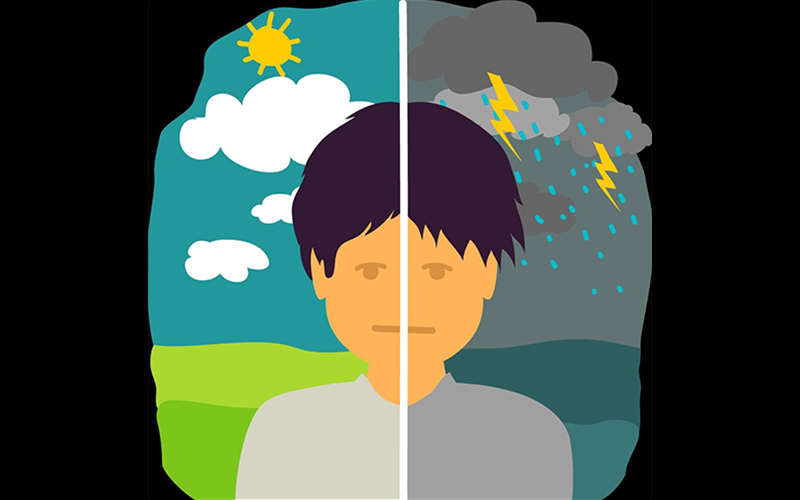
Living with bipolar disorder can be challenging, affecting millions of people worldwide. Alongside mood swings and shifts in energy levels, individuals with bipolar disorder may also experience bipolar paranoia, a distressing symptom that can significantly impact daily life. In this blog, we’ll explore the relationship between bipolar disorder and paranoia, shedding light on this often misunderstood aspect of mental health.
Understanding Bipolar Disorder
Bipolar disorder is a mental health condition marked by extreme mood swings between highs (mania) and lows (depression). Bipolar disorder encompasses several types, including:
- Bipolar I: Bipolar I involves manic episodes lasting at least seven days, often accompanied by depressive episodes.
- Bipolar II: Bipolar II is characterized by hypomanic episodes and depressive episodes but no full-blown mania.
- Cyclothymic disorder: Cyclothymic disorder involves chronic fluctuations in mood, with periods of hypomanic symptoms alternating with mild depressive symptoms.
Key symptoms include elevated mood (mania), increased energy, racing thoughts, and impulsive behavior during manic or hypomanic episodes, and persistent sadness, fatigue, and loss of interest in activities during depressive episodes. These mood fluctuations can disrupt various aspects of life, from relationships to work responsibilities.
What is Paranoia?
Paranoia refers to irrational suspicions and beliefs that others are plotting harm or intending to cause trouble. It involves a heightened sense of mistrust and fear towards others, leading to feelings of persecution or conspiracy. In individuals with bipolar disorder, paranoia can manifest during manic, depressive, or mixed episodes, exacerbating existing mood symptoms
It’s essential to differentiate paranoia from other symptoms of bipolar disorder, such as mood swings or impulsivity, as paranoia specifically revolves around mistrust and suspicion of others. Paranoia in bipolar disorder may present as exaggerated fears of betrayal, persecution, or surveillance, leading to social withdrawal, agitation, and anxiety.
Understanding and recognizing paranoia is crucial for effective management and treatment of bipolar disorder, as addressing bipolar paranoia symptoms can improve overall mental well-being and quality of life.
Prevalence of Paranoia in Bipolar Disorder
Statistics reveal that up to 60% of individuals with bipolar disorder experience paranoid symptoms at some point in their lives. This prevalence underscores the significant impact paranoia can have on those living with bipolar disorder, highlighting the need for awareness and support.
Factors Causing Paranoia in Bipolar Disorder
Factors contributing to the development of paranoia in bipolar disorder include:-
- Genetic predisposition: A family history of mental illness may increase the likelihood of developing paranoia in bipolar disorder.
- Traumatic experiences: Past trauma or adverse life events, such as abuse or neglect, can exacerbate bipolar paranoia symptoms.
- Substance abuse: Alcohol or drug misuse can trigger or intensify paranoia in individuals with bipolar disorder.
Triggers for Paranoia in Bipolar Disorder
Some common triggers for paranoid episodes in bipolar individuals:
- Stress: High levels of stress or anxiety can amplify paranoid thoughts and beliefs.
- Sleep disturbances: Disrupted sleep patterns, common in bipolar disorder, may contribute to paranoid ideation.
- Changes in medication: Adjustments to medication or non-adherence to treatment regimens can disrupt mood stability and trigger paranoid episodes.
Seeking professional help and implementing appropriate coping strategies can mitigate the impact of paranoia on daily functioning and improve overall mental well-being.
Symptoms of Paranoia in Bipolar Disorder
Paranoia in Bipolar Disorder can manifest in various ways, including:
- Suspicion and Distrust: Individuals may become excessively suspicious of others, even close friends or family members, believing they are being plotted against or persecuted.
- Bipolar Aggression Paranoia: Heightened irritability and aggression in bipolar disorder can be fueled by paranoia, leading to outbursts triggered by perceived threats.
- Hyper-vigilance: Constantly scanning the environment for potential threats or dangers, individuals may become hyper-vigilant, leading to increased stress and anxiety.
- Conspiracy Beliefs: Individuals may develop beliefs in elaborate conspiracies, believing that others are working together to harm them or manipulate their life circumstances.
- Heightened Sensitivity to Rejection or Criticism: Individuals may interpret neutral or benign interactions as hostile or critical, leading to feelings of persecution or rejection.
- Misinterpretation of Reality: Paranoia can distort one’s perception of reality, leading to misinterpretation of events, situations, or the intentions of others.
- Bipolar and Paranoia Anxiety: Anxiety often accompanies paranoia in bipolar disorder, manifesting as constant worry and fear of perceived threats or danger.
- Social Withdrawal: Due to feelings of paranoia, individuals may withdraw from social interactions to avoid perceived threats or dangers.
- Bipolar and Paranoid Delusions: Individuals with bipolar disorder may experience paranoid delusions, believing false ideas such as being spied on or manipulated by others, impacting their behavior and functioning.
It’s important to note that experiencing occasional paranoia doesn’t necessarily mean someone has bipolar disorder, as paranoia can occur in various mental health conditions. However, when paranoia is coupled with other symptoms of bipolar disorder, it may indicate a need for professional evaluation and treatment.
Diagnosis of Paranoia in Bipolar Disorder
Understanding the diagnostic process for paranoia in bipolar disorder is essential for effective management and bipolar paranoia treatment planning.
- Clinical Assessment: A thorough evaluation by a mental health professional is essential to assess symptoms, including paranoia, within the context of bipolar disorder.
- Medical History: Understanding the patient’s history of mood swings, manic or depressive episodes, and previous experiences with paranoia is crucial.
- Diagnostic Criteria: Paranoia must be distinguished from other psychotic symptoms and be evaluated in conjunction with mood symptoms characteristic of bipolar disorder.
- Collateral Information: Input from family members or close associates can provide valuable insights into the severity and impact of paranoid symptoms.
Treatment of Paranoia in Bipolar Disorder
Addressing bipolar paranoia involves a combination of treatments like medication, therapy, education, and lifestyle changes:
- Medication: Antipsychotic medications are often prescribed to help alleviate paranoia. Mood stabilizers may also be used to manage bipolar symptoms and prevent mood swings.
- Therapy: Cognitive-behavioral therapy (CBT) can be effective in helping individuals recognize and challenge paranoid thoughts. It can also help develop coping strategies to deal with these thoughts when they arise. Additionally, therapy can address underlying issues contributing to paranoia and bipolar disorder.
- Support groups: Joining a support group for individuals with bipolar disorder can provide a sense of community and understanding. Sharing experiences and coping strategies with others who have similar challenges can be helpful.
- Lifestyle changes: Maintaining a regular sleep schedule, engaging in regular exercise, and avoiding drugs and alcohol can help manage symptoms of bipolar disorder and reduce the likelihood of triggering paranoia episodes.
- Education and self-awareness: Learning more about bipolar disorder and paranoia can empower individuals to better understand their symptoms and seek appropriate bipolar paranoia treatment when needed. Keeping a mood journal to track mood changes and paranoid episodes can also be helpful.
Overall, the treatment approach should be individualized, taking into account the severity of symptoms, the patient’s preferences, and their response to previous treatments. Close monitoring and collaboration between the patient, their family, and healthcare providers are crucial for managing paranoia in bipolar disorder effectively.
Coping Strategies for Individuals with Paranoia in Bipolar Disorder
Coping with bipolar paranoia involves a multi-faceted approach. Firstly, fostering open communication with a trusted support network, such as family or therapists, can provide reassurance and perspective. Developing mindfulness techniques, like deep breathing or meditation, helps manage intrusive thoughts. Engaging in activities that promote relaxation and distraction, such as exercise or hobbies, can alleviate stress.
Additionally, adhering to a consistent sleep schedule and avoiding substance use can stabilize mood and reduce paranoia triggers. Lastly, cognitive-behavioral therapy techniques, like cognitive restructuring, challenge irrational beliefs and promote healthier thought patterns, aiding in paranoia management.
Supporting Loved Ones with Paranoia and Bipolar Disorder
Supporting loved ones with paranoia and bipolar disorder involves patience, empathy, and understanding. Encourage them to seek professional help and adhere to their treatment plan. Be a compassionate listener, validate their feelings, and offer reassurance during episodes of paranoia. Help them develop coping strategies and engage in activities that promote stability and well-being. Educate yourself about their condition and prioritize self-care to maintain your own mental health while providing support.
Challenges and Stigma
The stigma surrounding bipolar disorder manifests as misconceptions, prejudice, and discrimination, exacerbating the challenges faced by those with the condition. Individuals may encounter social isolation, employment discrimination, and limited access to healthcare due to stigma. Paranoia can intensify when individuals feel judged or marginalized, leading to withdrawal and avoidance of treatment. The fear of being labeled “crazy” or “unpredictable” discourages open discussion and seeking help. Overcoming stigma requires education, advocacy, and fostering supportive communities to reduce discrimination and empower individuals to manage their conditions effectively.
Conclusion
Bipolar paranoia is a complex and often misunderstood aspect of mental health. By increasing awareness, seeking support, and fostering empathy, we can create a more inclusive and supportive environment for individuals living with bipolar disorder and paranoia. Remember, seeking help is a sign of strength, and together, we can work towards better mental health for all.
Take action today by contacting Emoneeds which provides resources and assistance to individuals living with bipolar disorder and other mental health conditions. Let’s work together to make a positive difference in the lives of those who need it most.
FAQs
Can paranoia be part of bipolar?
Yes, paranoia can be a symptom of bipolar disorder during manic or depressive episodes, but not everyone with bipolar experiences it.
How do you stop bipolar paranoia?
To address bipolar paranoia, consult a psychiatrist for medication adjustments and therapy. Maintain a consistent routine and engage in stress-reducing activities.
What does bipolar psychosis look like?
Bipolar psychosis involves mood swings with psychotic symptoms like hallucinations or delusions, affecting behavior, thinking, and perception.
What causes paranoia in the brain?
Paranoia can result from abnormalities in brain regions involved in threat detection and processing, such as the amygdala and prefrontal cortex.
How long does bipolar paranoia last?
The duration of bipolar paranoia varies greatly. It can persist for hours, days, or even weeks, depending on the individual’s condition.



























